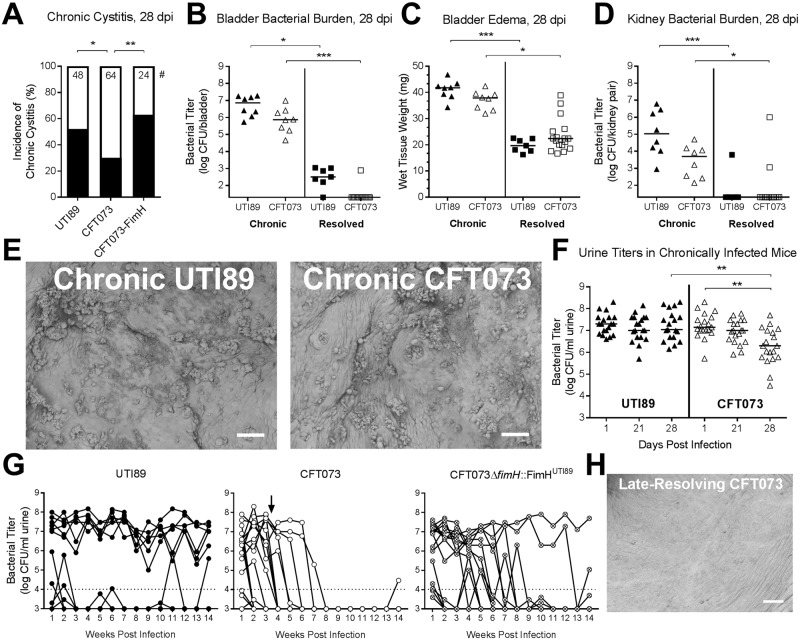Fig 2. CFT073 infection is less robust than UTI89 at 28 dpi and clears over time.
Juvenile Naive (7–8 week old) female C3H/HeN mice were infected with 108 CFU UTI89, CFT073, or CFT073ΔfimH::FimHUTI89 (“CFT073-FimH”) and monitored for 28 days. (A) Percentage of mice (infected as indicated) that developed chronic cystitis, which was defined as persistent, high-titer bacteriuria (>104 CFU/ ml urine), bladder bacterial burden >104 CFU/bladder and bladder inflammation at time of sacrifice [14]. * P < 0.05, ** P < 0.01, Fisher’s exact test. (B-D) Bacterial burdens (B) and edema (C) and kidney burdens (D) at 28 dpi in mice with chronic cystitis caused by UTI89 or CFT073 (“Chronic”) compared to mice that had spontaneously resolved these infections (“Resolved”). (E) Scanning electron microscopy (SEM) of bladders harvested from mice with chronic UTI89 or chronic CFT073 cystitis at 28 dpi. Representative images from N = 1 experiment with n = 3 mice per group are shown; scale bars, 50 μm. (F) UTI89 and CFT073 urine titers over time in mice meeting the criteria for chronic cystitis (persistent, high-titer bacteriuria >104 CFU/ ml urine). (G) Mice infected with UTI89 (n = 12), CFT073 (n = 18), or CFT073ΔfimH::FimHUTI89 (n = 15) were followed for 14 weeks. Dashed lines indicate our previously established cutoff for high-titer persistent bacteriuria, 104 CFU/ml urine. Note that 4 out of 18 CFT073-infected mice resolved the infection between weeks 3 and 4 (indicated by the arrow); this “late-resolving” phenotype contributes to the lower incidence of CFT073 chronic cystitis at 4wpi, seen in 2A. (H) SEM at 28 dpi of a mouse that resolved a CFT073 infection between days 21 and 28 (a so-called “late resolver”); scale bar, 50 μm. Data are combined from two to three independent experiments; data points represent actual values for each individual mouse, zeros are plotted at the limit of detection, and bars indicate median values. * P < 0.05, ** P < 0.01, *** P < 0.001, **** P < 0.0001, Kruskal-Wallis test with Dunn’s multiple test correction.

